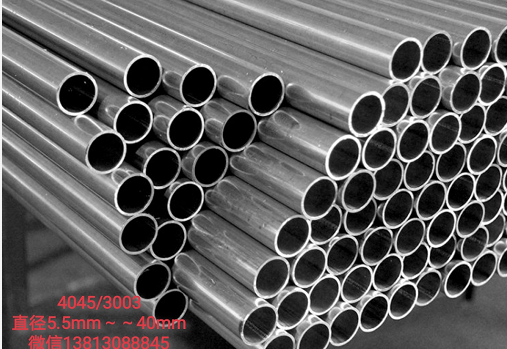Classification of aluminum tubes
When it comes to aluminum tubes, everyone is familiar with them. They are actually aluminum alloy tubes, because aluminum tubes made of pure aluminum are very soft and almost useless.
Compared with steel pipes, aluminum alloy pipes are lighter and more deformable, and can be bent. And the aluminum tube is also very corrosion-resistant. Today, let's introduce the types of aluminum tubes.

There are many kinds of aluminum tubes because of their superior forming performance. When we talk about pipes, we usually think of round pipes, which are also the most widely used pipes. In addition to round tubes, aluminum tubes also include square tubes, rectangular tubes, oval tubes, special-shaped tubes, etc. Aluminum tubes are extruded through molds, as long as there is a mold to make patterns of aluminum tubes.
There is also a special kind of aluminum tube, called seamless aluminum tube, which is not extruded by ordinary dies, but produced by punching extrusion. This kind of aluminum tube is difficult to produce and expensive. There is no welding line. This kind of aluminum tube is suitable for special processes such as bending.
Production process of aluminum tube
The raw material of all aluminum hose turns out to be aluminum ingots (or aluminum sheets). This is an aluminum alloy with an aluminum content of 99.7% (the remaining 0.3% is zinc, copper, magnesium, manganese, titanium, etc.). Now, with automatic production equipment, aluminum ingots can be made into the final finished product - packaging aluminum tubes for filling and filling in one production line.
The first step in manufacturing all aluminum hoses is to press aluminum ingots into preliminary tubes with stamping equipment, which is called "extruding". At this time, it is only basically formed, and the parts of the pipe tooth and the pipe tail are still rough embryos, which need to be "trimmed and threaded" with reaming equipment, including cutting the pipe tail flush and cutting out the required threads at the pipe orifice. At this time, the aluminum tube is actually hard and must be sent to the oven for "annealing" to restore the flexibility of the aluminum tube. After high temperature annealing, it becomes a real "aluminum hose". After the aluminum hose is formed, it is not suitable for filling paste, and a series of processing must be carried out.
After annealing and cooling, the all aluminum hose is then "internal lacquering", that is, a thin layer of resin is sprayed inside the pipe wall. This kind of resin can effectively prevent the influence of acid, alkali, water vapor and solvent, improve the tightness of pipes, and isolate the paste from contacting with aluminum. In addition, if aluminum tubes are used as cosmetics packaging, health care products packaging or drug packaging, they must be sprayed with resins that meet food hygiene standards. After internal spraying, heat and bake to cure it.
Since most of the packaged aluminum tubes are sold in the market as consumer commodities after filling the paste, it is necessary to pay attention to the appearance and have complete product information. "Base coating" is to coat a layer of (usually white) resin on the surface of the aluminum tube cylinder. The characteristic of this resin is that it can be closely attached to the pipe body, with high flexibility and scratch resistance. The aluminum pipe is coated to make it withstand slight scratches and collisions. After the primer is coated, it must also be baked to cure.
The next step is to print words and patterns on the tube body. Aluminum tube "printing" is to provide recognition and aesthetics for products. Good printing quality can bring intuitive refinement to aluminum tubes, so it is also the most valued link. Aluminum tube printing has the difference between offset printing and silk screen printing. The more common offset printing has different equipment conditions of four colors, five colors and six colors. It also needs to be heated and dried after printing. After printing, you can "capping".
The last procedure of aluminum tube processing is "latex lining", which is spraying a circle of latex near the opening inside the tube wall, referred to as tail glue for short. Its function is to fill the gap at the folding place when the aluminum tube is folded and sealed, so as to improve the tightness of the package.
It should be noted that not all paste products need every processing program. In practice, whether internal coating and tail glue are required should be determined according to the properties of the content, and the way of primer and printing should be determined according to the needs of product design. Although the production of packaged aluminum tubes is not precision technology, it also stresses various process details, so that it can have the sealing, aesthetics and portability of packaging materials. In this way, the products that are finally filled can play their due functions in the life of customers .


